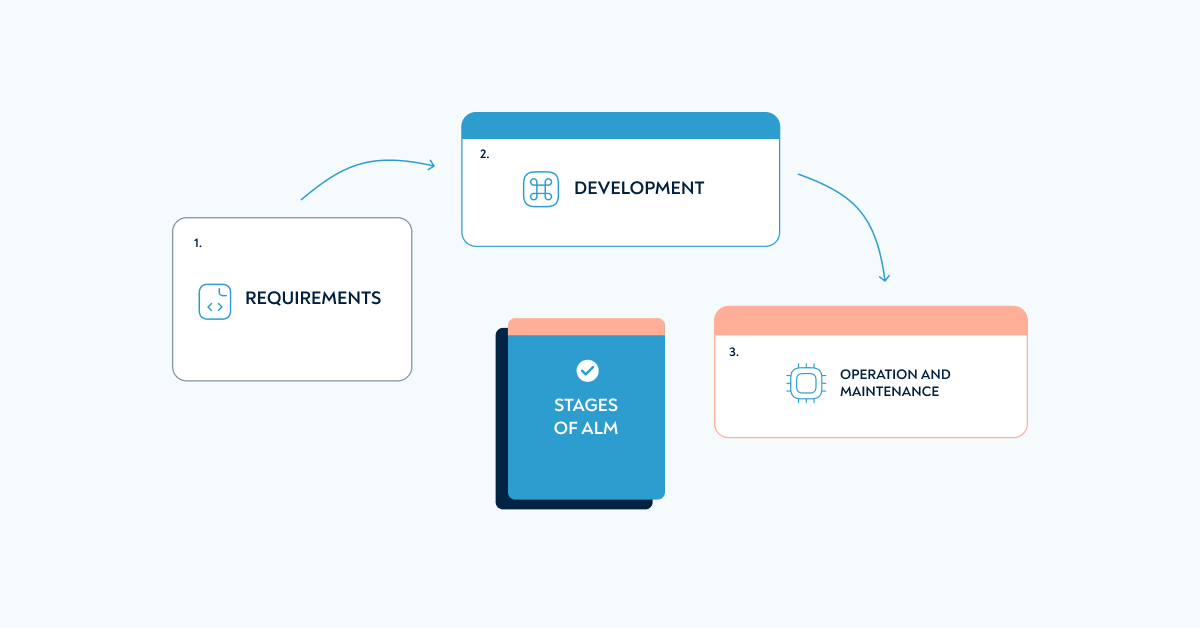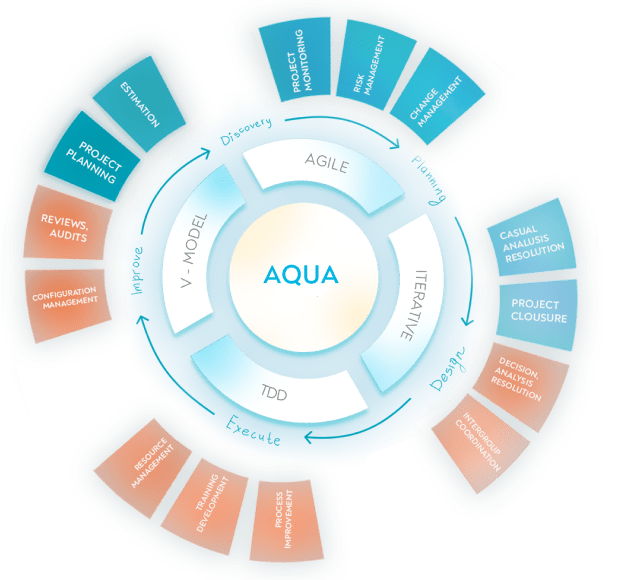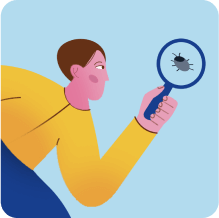To understand the meaning of ALM, imagine a restaurant where clients are always satisfied. There is well-organised work in the kitchen behind this tremendous success, where the chef controls everything from products order to the final dish. The chef here is an ALM solution — the almighty power properly delegating tasks amongst employees, knowing everything about the surrounding, controlling changes, and mitigating financial and reputation risks. For comparison, if this chef were just a bug tracking platform, he would catch cockroaches in already made dishes before they are served.
This pushes us to the primary ALM definition — managing a product’s lifecycle, from concept to market. It covers project and requirements management, the entire software development cycle and quality assurance.
What is ALM Used For?
ALM, or Application Lifecycle Management, is your comprehensive solution for managing every phase of an application’s journey. It’s used to:
- Manage the stages of your application lifecycle: With ALM, you get a structured approach that oversees every aspect, from initial planning and development to deployment and retirement. This ensures that each stage is executed efficiently, helping you avoid common pitfalls like scope creep or miscommunication.
- Streamline your development process: An ALM system integrates various tools and processes. It automates tasks that would otherwise consume valuable time. This allows you to track progress in real-time, manage resources effectively, and ensure that your application aligns with your business objectives.
- Adapt to your evolving business needs: As demand grows, you need ALM more. It provides the flexibility to update features, address security vulnerabilities, or scale your application against the growing demand. This way, you can ensure smooth transitions and minimal disruptions.
- Maintain high-quality standards: By applying continuous integration and automated testing, ALM helps your software remain reliable and aligned with user expectations. It reduces the risk of bugs and keeps your product competitive in the market.
Advantages of Application Lifecycle Management
Using ALM provides several compelling advantages that make it an indispensable part of your software management strategy:
- Greater visibility: ALM tools offer dashboards and reporting features that give you a real-time overview of your application’s status. This visibility allows you to identify potential issues early, allocate resources more effectively, and make informed decisions that keep your project on track.
- Improved collaboration: One of the most significant benefits of ALM is its ability to break down silos between different teams. By providing a unified platform for communication and documentation, ALM ensures that everyone from developers to project managers is on the same page. This reduces misunderstandings and fosters a more collaborative working environment.
- Streamlined processes: ALM simplifies the complex processes involved in managing an application by automating routine tasks and providing templates and best practices. This streamlining not only saves time but also reduces the risk of errors, ensuring that your application is developed and maintained efficiently.
- Faster delivery: By automating key processes and integrating tools that support continuous delivery, ALM helps you bring your application to market faster. This speed doesn’t come at the expense of quality; in fact, ALM’s built-in quality checks ensure that your application is thoroughly tested before release.
- Enhanced quality control: ALM incorporates quality management throughout the entire application lifecycle, not just during the development phase. Continuous testing and integration are part of the ALM process, allowing you to catch and fix issues early, which results in a more stable and reliable application.
Quality assurance is a process that should run through every stage of the ALM. Unfortunately, not everyone fully embraces this approach, but it’s critical to ensuring high-quality software at each phase. At aqua, we’ve built a system that enhances ALM by integrating QA into every step, from initial planning to deployment. While aqua is primarily known as a Test Management System (TMS), many companies rely on it as a complete ALM solution because of its ability to manage and improve the entire lifecycle. We encourage you to try aqua and see how it can elevate your ALM process.
Having 20 years of market experience and German quality, here is what makes aqua the ultimate TMS for you:
- Delivering advanced AI capabilities to save time across the test life cycle with context-aware models that generate requirements, create test cases and test data and identify patterns.
- Bringing structure to your fragmented QA work by combining testing data and implementing streamlined workflows.
- Providing full visibility into your QA process with transparent tracking of changes and detailed reporting, enabling both high-level overviews and in-depth analysis.
- Enhancing user experience with an intuitive interface that reduces human errors and uses controlled collaboration through pre-configured views, rule-based workflows, and granular permissions.
- Delivering the most visual bug tracking solution through its integration with Capture, a screen-recording extension.
Ready to elevate your ALM approach through perfect TMS? What are you waiting for?
Go beyond traditional ALM, achieve 100% efficiency in all your QA efforts
Differences Between ALM and SDLCM
While ALM and SDLCM (Software Development Life Cycle Management) are both crucial for software development, they have distinct roles and scopes:
- Scope: ALM encompasses the entire lifecycle of an application, including planning, development, deployment, maintenance, and retirement. SDLCM, however, is more narrowly focused on the development phase, covering activities like requirements gathering, design, coding, testing, and deployment.
- Processes: SDLCM is a subset of ALM, focusing on creating and delivering a functional product. ALM, on the other hand, includes SDLCM but also covers post-deployment activities such as monitoring, updates, and end-of-life management. This broader scope makes ALM essential for organisations looking to manage applications over the long term.
- Tools: The tools used in ALM are designed to support a wide range of activities, from project management and version control to testing and deployment. In contrast, SDLCM tools are more specialised, focusing primarily on development tasks such as coding, debugging, and testing.
- Lifecycle management: ALM provides a holistic approach to managing the entire lifecycle of your application, ensuring it remains viable and effective as business needs evolve. SDLCM, while important, is primarily concerned with delivering a product that meets initial specifications, leaving ongoing management to other processes.
Importance of ALM
So what makes an application lifecycle management tool essential for companies?
- Project and requirements management
Any development needs a structured plan, precise requirements and a comprehensive but flexible workflow. And the more functions your ALM platform can provide, the better the final product or a program.
- Software Development
Bug report software for developers or an ALM test management tool can significantly mitigate unnecessary risks and issues. Traceability can show if there are human factor mistakes, proper communication under items can help address problems on time, and bug tracking feature to find out the consistent pattern of defects.
- Quality assurance
Since the Shift left approach takes more part in contemporary development, companies prefer concentrating on quality from the earliest stage instead of fixing defects after release.
It also explains why companies prefer tools with broad test capabilities instead of using a specific one, for instance, a performance test tool.
Stages of ALM

The stages of ALM in testing coincide with what makes ALM important for development:
Requirements
This stage includes gathering requirements from stakeholders and decision-makers accordingly to the company’s business goals.
Development
Once requirements are gathered, your project turns into the development phase. This phase includes three steps — creating, testing and deploying.
Operation and maintenance
As the product is deployed, you need to monitor it throughout its functioning. At the same stage, you must test it for bugs and prioritise updates when required.
Key activities of ALM
Activities of ALM break down different stages of application lifecycle management into smaller to-dos and deliveries. These are often described as separate features in lifecycle management systems.
Requirements/Governance
The set of activities below covers creation of requirements and the administrative overhead that managing them brings. Some governance activities include:
- Requirements management that covers how requirements are grouped, prioritised, updated, and even replaced or abandoned if needed.
- Resource management facilitates implementation of requirements, as project managers schedule what their teams can feasibly do with a certain timeframe (e.g. sprint).
- User access covers the privileges of browsing and modifying information about the individual project. It requires extra care from companies that manage multiple endeavours in a single space.
- Logging refers to actions done within an application lifecycle management solution
- Item history covers changes to both an ALM ticket and the actual code / graphics design / text that this ticket covers.
- Internal and regulatory audits as dictated by the company’s policies and the requirements of the industry.
- Deployment management reflects the company’s guidelines for adding new code to the production environment of a solution
- Rollbacks cover the procedures and infrastructure from going back to the previous state after a failed update.
Development
The activities here mirror activities that are common for software development. ALM testing tools are a good aid for companies that operate on a full product lifecycle. The activities include:
- Planning is a purely business-driven stage where you gather the needs and wants of business stakeholders. You then involve them into the creation of requirements or handle that part as a software development team and invite these stakeholders for a review.
- Analysis challenges created requirements from the feasibility’s point of view. Would implementing certain functionality take too long for a solution meant to ride a trend? Are certain features too time-consuming to make and expensive to maintain while bringing minimum value? It may seem like penny-pinching, but analysis is a very exciting part of the software development process.
- Design does not actually refer to the user interface. Instead, this is where your team plans how they will fulfil analysis-adjusted requirements into a functioning piece of software. It is not uncommon to make a prototype, especially if you’re a startup company that needs to attract funding or demonstrate a milestone
- Implementation is the actual software development, where user stories become code that makes them happen.
- Testing & integration covers quality assurance of the code from the implementation stage as well as its deployment. Note that the last two stages are getting increasingly blurry with unit testing becoming much more common.
Maintenance and operations
The activities below refer to post-release support of an application:
- Bug fixes cover all defects discovered after the release, and sometime before it. Bug fixing is a never-ending and often never-completed process. Even with the greatest bug reports, business priorities make it more likely for a product to reach end-of-life rather than see all non-severe issues fixed.
- Feature updates bring new functionality that wasn’t requested at the Planning stage, didn’t fit the implementation timeline, or didn’t seem feasible during the initial Analysis. Some nice-to-have functionality brought up during user acceptance testing can be added as well.
- General upkeep could be anything from changing the year in the copyright footer to regularly replacing the web trust certificate.
Agile vs Waterfall methodologies in ALM
Generally, application lifecycle management refers to streamlining everything about a product. It does not govern how your company will approach the software development / implementation stage.
Agile is a good fit for application lifecycle management, since ALM use introduces the use of advanced all-in-one solutions. Following the Agile methodology is easier when your team uses a tool for native ticket management and facilitates good communication. These solutions also ensure that any business-sensible changes from sprint planning are immediately reflected on the project’s timeline.
Waterfall benefits from application lifecycle management in a somewhat different fashion. This methodology values advance planning with very limited, obstacle-related deviation from it. You can make a more reasonable timeline and leave ample buffer if you plan the entire lifecycle, not just software development.
The dilemma of going Agile vs Waterfall has much more aspects to it than just application lifecycle management. You can find an article on which methodology works best for quality assurance in our blog.
Best application lifecycle management tools
aqua cloud
aqua cloud framework is created to meet all requirements of the actual application lifecycle management app. Covering all necessary functionality of the test management platform also contributes to easier regulation compliance, proper project management and even Agile practices. Traceability of aqua cloud goes above and beyond — you not only check bugs in the system but also create test cases and defects and get access to information about who has ever interacted with the elements.
Zephyr
Zephyr offers similar to aqua cloud functionality with great rolled-out reports and comprehensive traceability. However, Zephyr doesn’t have a flexible pricing policy and is mainly suitable only for large enterprises. Among other things, Zephyr has limited functionality for the Agile methodology. It can complicate the early implementation of QA of the shift-left approach.
Polarion
Polarion, featured by Siemens, is a popular ALM tool, especially for QA testing for manufacturing. However, this ALM solution is not cost-effective for small and middle enterprises. It enables integration with continuous releases, testing, build, and automation. But you also need to consider that Polarion depends on outside tools since it doesn’t have the features to source code configuration natively.
What is the Future of ALM?

Even with the advent of new methods or the need to introduce artificial intelligence into all areas of development, ALM will probably remain the only solution for managing such processes. Of course, ALM will not stay in its original form and evolve into something more advanced. According to some experts, most likely, it will merge with Product Lifecycle Management and form Enterprise Lifecycle Management.
Conclusion
Global digitalisation made companies worldwide adopt new technologies to win this technological race. For most of them, it means increasing the quality of released software, which eventually burdens software development and quality assurance teams. As a result, it raises the urge to implement a single system lifecycle management process that can provide complete transparency and organisation. And Application Lifecycle Management tools can cover this demand.
As the digital landscape evolves, having a robust ALM solution with a strong focus on QA and Test Management is essential to stay ahead. The good news is, there are solutions that offer both.
This is where aqua cloud comes into the scene. With its powerful features, aqua aims at only one thing, taking away the pain of testing. Its AI-driven capabilities help you generate requirements, test cases, and reliable, comprehensive test data in just 3 seconds. With its intuitive and customisable dashboards, aqua provides 100% visibility and also traceability in your testing efforts. If you have struggles navigating, an advanced AI-Copilot is by your side all the way. So, what’s keeping you from transforming your QA efforts with a few clicks?
Take your software lifecycle to the next level with a 100% AI-powered solution






